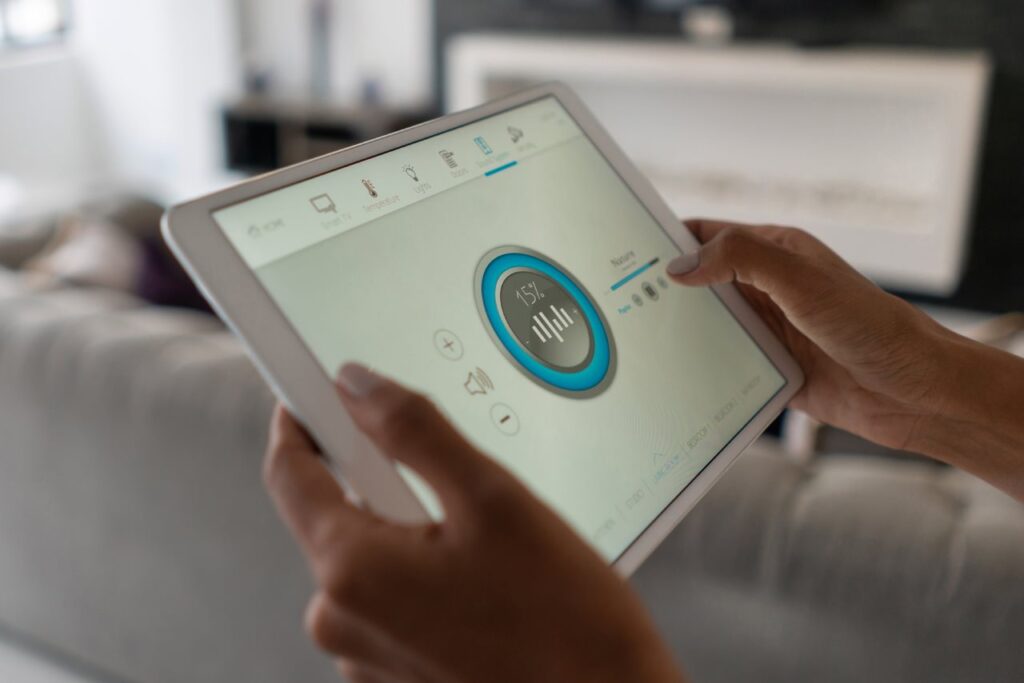Controlling the operations of a home with a finger tap seemed out of reach only a few years ago. Today, homeowners are unlocking doors, setting alarms, adjusting the temperature and even turning on lights with a tap on a smartphone. Are we now living in George Jetson’s world?

“Smart homeowners are inquisitive about what is going on with their property,” said Mercury Insurance product manager for homeowners Adam Bakonis. “Smart devices not only notify homeowners of issues earlier, they make you more aware of what is happening with different systems and can help prevent a costly disaster.”
When investing in any smart home system, you should speak to an insurance agent to see if the device may qualify you for an insurance discount.
Water leak detection systems
Excluding weather events, water leaks are the most common cause of property damage and can easily go undetected. By the time a leak has made itself known, it may have done some extensive damage. Water leak detection devices can discover all types of leaks, including hidden ones — though functionality and capabilities will vary by device.
“Sensors that monitor water flow, for example, can send a notification to a homeowner’s device periodically and let them know of a potential issue,” said Bakonis. “Many of these systems will notify homeowners through their smartphones, allowing them to view and monitor water use both indoors and outdoors and be alerted to a potential problem before it gets worse.”
Homeowners may be able to lower the cost of their water bills by preventing water waste while also avoiding catastrophic damage due to a leak. Some water districts and insurers provide rebates or other incentives for a water leak detection device. Homeowners should check with both their insurance agent and local water district to see if they qualify for any discounts.
Smart fire detection system
Smart smoke detectors take fire prevention a step further than standard smoke detectors. Smart smoke detectors can be wired into home security systems and be monitored to notify both the homeowner and the local fire department or a monitoring service of an alarm. Some alarms can detect unsafe carbon monoxide levels in the air and prevent the spread of smoke by shutting down air ventilation systems. They may also provide notification to a homeowner’s smartphone if the battery is getting low.
Cyber protection and security
While smart home technology provides homeowners with a sense of security and convenience, there can still be risks, especially from cyberattacks. Homeowners should stay vigilant and protect their systems with strong passwords, encryption and connecting devices only to their own network. Homeowners should also make sure they don’t share any sensitive login information since these devices may rely on a password or specific device access.
Cyber protection is an additional type of coverage that homeowners who incorporate smart technology into their home should seriously consider as the coverage may be designed to protect any electronic device connected to the internet.
“It’s important for homeowners to remember that home cyber is not just computers, it’s all electronic devices,” said Bakonis. “A cyber-attack on a connected home device would be covered by cyber protection coverage that is available to be bundled with many homeowners policies. This protection would pay to recover data and restore systems that have been lost or damaged due to a hack, including connected home devices.” Homeowners should check with their insurance agent to see what options are available and what is covered.
Investing in a smart home doesn’t have to be expensive. Many systems work together so homeowners can start with smaller devices and expand their systems as their needs increase.
“If you are investing in smart home devices know that there are often insurance benefits that come in the forms of discounts for devices that monitor some of the most common claims which are fire, water and theft,” said Bakonis. “Over time, the amount you save on your premium may be even greater with devices that help with monitoring safety and prevention.”
(Brian Casey) (BPT)
